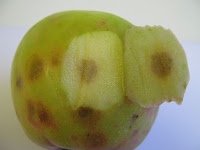What Are Billbugs?
Billbugs are cylindrical beetles that range in size from 3 to 10 millimeters in length, depending upon life stage. As adults, they have a hard exoskeleton and are usually brown or black in color. Their snout, which is often longer than their body, is used for boring into plant stems. Billbugs undergo a complete metamorphosis, passing through the egg, larval, pupal, and adult stages, with a one-year life cycle (Oregon State University Extension, 2018). The majority of damage from billbugs occurs during the larval stage, as they feed on stems, rhizomes, and crowns, typically just below the soil surface. Damage from billbugs is typically visible in late June or early July each year.
In the Treasure Valley of Idaho, billbugs are particularly abundant in lawns, parks, and golf courses. They feed on the stems and roots of turf grass, causing significant damage to the plant's ability to absorb water and nutrients. This feeding can lead to large areas of grass dying, creating unsightly brown patches that are not only aesthetically unpleasing but also difficult to repair (Idaho State University Extension, 2017).
Impact of Billbugs
The impact of billbugs on turf grass can be significant. In addition to the unsightly brown patches, Billbugs can reduce the health of the grass, leading to reduced aesthetic appeal and causing economic losses for lawn owners (Idaho State University Extension, 2017).
Integrated Pest Management (IPM)
Integrated pest management (IPM) is a comprehensive approach to managing billbug infestations that involves multiple control methods. This strategy utilizes cultural, biological, and chemical control methods to promote the health of the turf and prevent billbug damage. Cultural control methods involve selecting the proper grass varieties that exhibit resistance to billbug feeding. Several cultivars of Kentucky bluegrass, such as ‘Park’, ‘Arista’, and ‘NuDwarf’, have been proven to exhibit resistance to billbug feeding. Additionally, endophyte-enhanced ryegrasses and fescues display high resistance to billbug feeding (University of Utah). IPM of Billbugs also includes implementing proper irrigation, fertilization, and mowing practices to maintain healthy turf. Biological control methods may involve releasing beneficial insects that feed on billbugs to control their population. Several nonchemical bio-pesticides exist, including purchasing and applying predatory nematodes (Stinernema & Heterorhabditis spp.), as well as a fungal organism (Beauveria bassiana) that are listed and registered for control of billbug larvae in lawns. When necessary, insecticides can be used to control billbugs, but should be used with caution to avoid harming beneficial insects and creating insecticide-resistant billbug populations (The University of Idaho Extension, 2017).







